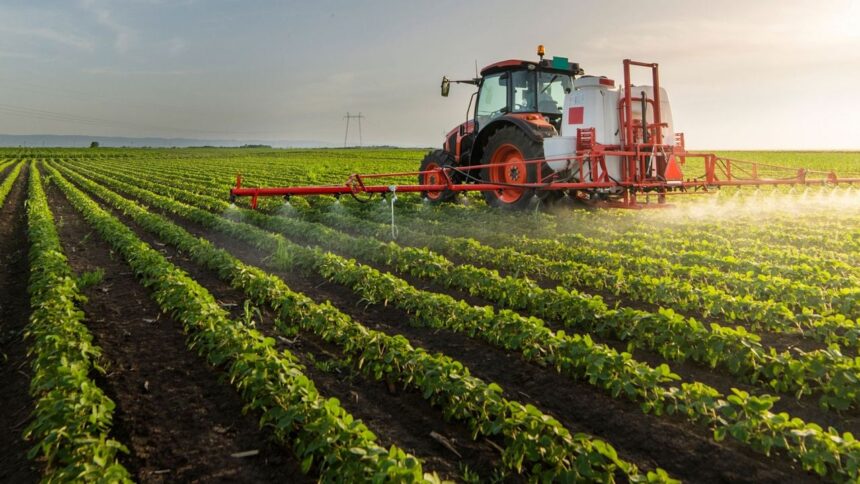Herbicides play a crucial role in modern agriculture, helping farmers control weeds that can otherwise reduce crop yields. However, improper use of herbicides can lead to a host of issues, from environmental harm to reduced effectiveness and crop damage. To ensure optimal results, it’s essential to select the right herbicide and apply it correctly. This guide walks you through the steps of proper herbicide use, from selecting the appropriate product to its safe and effective application.
Step 1: Understanding Herbicides and Their Types
Before diving into selection and application, it’s essential to understand the types of herbicides available and their functions:
1. Pre-emergent Herbicides: These herbicides are applied before weeds germinate. They form a chemical barrier on the soil that prevents weed seeds from sprouting.
2. Post-emergent Herbicides: These herbicides are applied after the weeds have already emerged and are growing. They are effective at killing established weeds.
3. Selective Herbicides: These target specific types of plants, killing the weeds without harming desired crops.
4. Non-selective Herbicides: These kill all vegetation they come in contact with and are often used for clearing areas where no plant life is desired.
Step 2: Herbicide Selection Based on Crop Type and Weeds
Choosing the right herbicide starts with knowing your crop and the types of weeds you need to control. Factors to consider include:
1. Weed Species: Identify the weeds present in your field. Different herbicides are designed to target different weed species. Some may only be effective against grasses, while others target broadleaf weeds.
2. Crop Tolerance: Ensure that the herbicide is safe for the crops you’re growing. Using a herbicide that your crops can tolerate will avoid accidental damage.
3. Soil Type: Soil characteristics such as pH, organic matter content, and texture can affect how herbicides behave. Some herbicides may be more effective in sandy soils, while others work better in clay-heavy soils.
4. Herbicide Resistance: In areas where herbicide resistance is a problem, it is crucial to rotate herbicides with different modes of action. Using the same herbicide repeatedly can lead to resistant weed populations.
Step 3: Herbicide Application Timing
Timing is critical in herbicide application, and it’s essential to follow the correct schedule for maximum effectiveness:
1. Pre-emergent Application: These herbicides must be applied before weed seeds germinate, usually before or during planting. Ensure soil conditions are favorable and rainfall or irrigation occurs shortly after application to activate the herbicide.
2. Post-emergent Application: Timing post-emergent herbicides during early weed growth stages (usually when weeds are small) maximizes their effectiveness. Applying post-emergent herbicides too late, when weeds are mature, can reduce their impact.
3. Environmental Conditions: Consider the weather when planning your application. Rain can wash herbicides away, rendering them ineffective, and windy conditions may cause drift, affecting non-target plants. Early mornings or late afternoons are usually optimal application times due to lower wind speeds and cooler temperatures.
Step 4: Proper Mixing and Calibration
Before you apply any herbicide, it’s vital to properly mix and calibrate your equipment:
1. Follow Label Instructions: Herbicide labels contain critical information on the proper mixing ratios. Follow these instructions precisely to ensure that the product works effectively and safely.
2. Correct Water Volume: Use the recommended amount of water when mixing the herbicide. Too little water can result in uneven coverage, while too much may dilute the herbicide, reducing its effectiveness.
3. Calibrate Your Sprayer: Ensure your sprayer is properly calibrated to deliver the correct amount of herbicide over the area to be treated. This step prevents under- or over-application, both of which can lead to problems such as inadequate weed control or crop injury.
Step 5: Herbicide Application Techniques
There are different techniques for applying herbicides, depending on the size of the area, type of crop, and equipment available:
1. Broadcast Spraying: This technique involves applying the herbicide evenly over a large area, using a sprayer mounted on a tractor or a handheld sprayer for smaller areas.
2. Spot Treatment: This method targets specific areas or individual weeds with a concentrated dose of herbicide. It is useful when weeds are isolated or when selective control is needed.
3. Wiper Application: For larger, tougher weeds, wiper applicators, which rub herbicide onto the plant, can help control them without affecting nearby crops.
4. Aerial Application: In larger fields, herbicides may be applied by aircraft, such as drones or helicopters. This method is fast and covers large areas but requires precise coordination to prevent drift.
Step 6: Safety Precautions
When applying herbicides, safety is paramount. Always take the following precautions:
1. Wear Protective Gear: Always wear personal protective equipment (PPE), such as gloves, goggles, long sleeves, and masks, when handling herbicides.
2. Avoid Drift: Herbicide drift can damage nearby plants or contaminate water sources. Use drift-reducing nozzles and avoid spraying on windy days.
3. Proper Storage: Store herbicides in a cool, dry place, out of reach of children and animals. Always keep them in their original containers with labels intact.
4. Disposal: Dispose of any leftover herbicide and containers according to local regulations to avoid environmental contamination.
Step 7: Post-Application Monitoring
After applying herbicides, it’s essential to monitor the results and the condition of your crops:
1. Weed Control Assessment: Check your field regularly to see if the herbicide is working effectively. If weeds persist, you may need to consider a different product or technique.
2. Crop Health: Monitor your crops for any signs of herbicide injury, such as leaf discoloration or stunted growth. If you notice issues, adjust your herbicide use in future applications.
3. Resistance Management: Keep track of how well the herbicide performs season after season. If resistance becomes an issue, rotate to different herbicides to prevent the development of resistant weed populations.
Proper herbicide use is essential for maintaining healthy, weed-free crops. By carefully selecting the right herbicide, applying it at the correct time, and following safe practices, farmers can maximize their yields and protect their land. Herbicides are powerful tools, but they must be used responsibly to ensure long-term agricultural sustainability and minimal environmental impact. Following these guidelines can help farmers strike a balance between effective weed control and crop protection.







